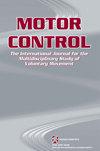Effects of Wearing Slippers While Obstacle Crossing in Healthy Young Adults: Strategy for Toe Clearance Enhancement and Prevention of Slipper Loss.
IF 0.9
4区 医学
Q4 NEUROSCIENCES
引用次数: 0
Abstract
Wearing loose footwear, such as slippers, poses a risk factor for tripping. Previous studies have examined obstacle crossing to find strategies to avoid tripping. However, the effect of wearing slippers on the likelihood of tripping remains unclear. Therefore, this study aimed to determine whether wearing slippers while level walking and obstacle crossing affects kinematic characteristics and muscle activity. Sixteen healthy, young adults performed two tasks (a) while wearing slippers and (b) while barefoot: (1) level walking and (2) crossing a 10-cm obstacle. Toe clearance, joint angles, muscle activity, and cocontraction were measured for both the leading and trailing lower limbs. In the slipper-wearing condition, knee flexion and hip flexion angles were significantly increased in the swing phase for the leading limb (p < .001 and p < .001, respectively) and trailing limb (p < .001 and p = .004, respectively) compared with the barefoot condition. Tibialis anterior activity (p = .01) and muscle cocontraction of the tibialis anterior and the medial head of the gastrocnemius (p = .047) were significantly increased in the swing phase of the trailing limb for the slipper-wearing condition compared with the barefoot condition in the obstacle crossing task. Wearing slippers increased knee and hip flexion angles, and muscle cocontraction of the tibialis anterior and medial head of gastrocnemius increased during obstacle crossing. The results revealed that obstacle crossing while wearing slippers would require foot fixation adjustment in addition to increased knee and hip flexion to avoid toe collision.健康年轻人过障碍时穿拖鞋的效果:提高脚趾间隙和防止拖鞋脱落的策略。
穿宽松的鞋子,比如拖鞋,会有绊倒的危险。之前的研究已经研究过穿越障碍,以找到避免绊倒的策略。然而,穿拖鞋对绊倒可能性的影响尚不清楚。因此,本研究旨在确定在水平行走和过障时穿拖鞋是否会影响运动学特征和肌肉活动。16名健康的年轻人完成了两项任务(a)穿着拖鞋和(b)光脚;(1)水平行走和(2)穿越10厘米的障碍物。测量前后下肢的脚趾间隙、关节角度、肌肉活动和收缩。穿着拖鞋时,前肢和后肢在摇摆阶段的膝关节屈曲角度和髋部屈曲角度均显著高于赤脚时(p < 0.001和p < 0.001)。与光脚穿越障碍时相比,穿拖鞋后肢摆动阶段的胫前肌活动度(p = 0.01)、胫前肌和腓肠肌内侧头肌收缩量(p = 0.047)显著增加。穿拖鞋增加了膝关节和髋关节的屈曲角度,并且在穿越障碍时胫骨前肌和腓肠肌内侧头的肌肉收缩增加。结果表明,穿拖鞋过障需要调整足部固定,并增加膝关节和髋关节屈曲以避免脚趾碰撞。
本文章由计算机程序翻译,如有差异,请以英文原文为准。
求助全文
约1分钟内获得全文
求助全文
来源期刊

Motor Control
医学-神经科学
CiteScore
1.80
自引率
9.10%
发文量
48
审稿时长
>12 weeks
期刊介绍:
Motor Control (MC), a peer-reviewed journal, provides a multidisciplinary examination of human movement across the lifespan. To keep you abreast of current developments in the field of motor control, it offers timely coverage of important topics, including issues related to motor disorders. This international journal publishes many types of research papers, from clinical experimental to modeling and theoretical studies. These papers come from such varied disciplines as biomechanics, kinesiology, neurophysiology, neuroscience, psychology, physical medicine, and rehabilitation.
Motor Control, the official journal of the International Society of Motor Control, is designed to provide a multidisciplinary forum for the exchange of scientific information on the control of human movement across the lifespan, including issues related to motor disorders.
Motor Control encourages submission of papers from a variety of disciplines including, but not limited to, biomechanics, kinesiology, neurophysiology, neuroscience, psychology, physical medicine, and rehabilitation. This peer-reviewed journal publishes a wide variety of types of research papers including clinical experimental, modeling, and theoretical studies. To be considered for publication, papers should clearly demonstrate a contribution to the understanding of control of movement.
In addition to publishing research papers, Motor Control publishes review articles, quick communications, commentaries, target articles, and book reviews. When warranted, an entire issue may be devoted to a specific topic within the area of motor control.
 求助内容:
求助内容: 应助结果提醒方式:
应助结果提醒方式:


